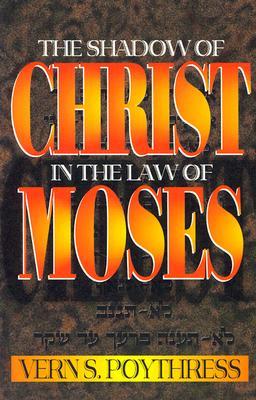As I proceed toward the Mosaic covenant, I thought it would be helpful to re-read Poythress‘ The Shadow of Christ in the Law of Moses. There are so few books that I am familiar with on this subject. I really like the writings of Poythress and I think it will be worth my time to revisit this book.
Helpful quotes for consideration:
The land is God’s own land; the people are only tenants (Lev. 25:23-24). Because the land is particularly associated with God, it is in a broad sense holy and will be defiled by gross sins (Lev. 18:24-28). The land is the land “where I dwell, for I, the LORD, dwell among the Israelites” (Num. 35:34). The land as the dwelling of God is analogous to the tabernacle and the temple, which are the dwelling of God in a more intensive sense. The small piece of land occupied by the temple is replicated on a large scale by the land as a whole. Thus we should not be surprised that the land is large-scale embodiment of the principles of the tabernacle. Defilement of the land corresponds to defilement of the tabernacle, and cleansing of the land, as in Num. 35:33-34, corresponds to cleansing the tabernacle. The people as a whole, who live on the land, are analogous to the priests who offer special service in the tabernacle.
Heaven is the dwelling of God. Is the land analogous to heaven? Heb. 11:14-16 says that the promise of land to Abraham caused him and his descendants to be “looking for a country of their own. If they had been thinking of the country they had left, they would have had opportunity to return. Instead, they were longing for a better country–a heavenly one.” Thus Abraham himself discerned that the land of Palestine was a shadow of a final heavenly dwelling place.
The law expresses God’s rule in at least three complementary ways. First, it publishes and imposes an order, a system of regularity, righteousness, and fitness. It specifies the way life is to be lived within God’s dominion and the distinctions and orders that are to be preserved. Second, it expresses the character of God and opens to Israel a personal communion with God the speaker. God’s communication to Israel embodies an intimacy with Israel unlike his relation to other nations (cf. Ps. 147:19-20). Third, it expresses the awesomeness of punishments and judgments that fall on people who are disobedient and unholy, and the rewards for the obedient.
Christ brought to fulfillment the three sides of God’s rule that we have already seen. He brought to expression the order of God’s life by his example, his teaching, and the teaching of the apostles sent by him. He also opened the way to a new depth of communion and personal fellowship with God as he revealed to us the very character of God. He is “the radiance of God’s glory and the exact representation of his being” (Heb. 1:3). And he made the definitive atoning sacrifice for sins when he died on the cross, thus satisfying the law’s penalties for disobedience.
The people of Israel themselves are a kind of small-scale version of a renewed humanity; but their disobedience shows how they fall short.
The laws for cleanness and uncleanness fit into this picture in a natural way. They signify and foreshadow the way in which God cleanses sin. They show that a renewed or recreated people are characterized by renewed behavior, behavior conforming to God’s order and separating them from sin.
Such an analogy between Israel and us does indeed exist, as Paul affirms in 1 Cor. 10:1-13. But it is a symbolical analogy, an analogy between two levels, like the ceremonial analogies of the so-called ceremonial laws. Hence the Christ-centered analogies of the ceremonies and the permanency of moral demands are inextricably linked.

